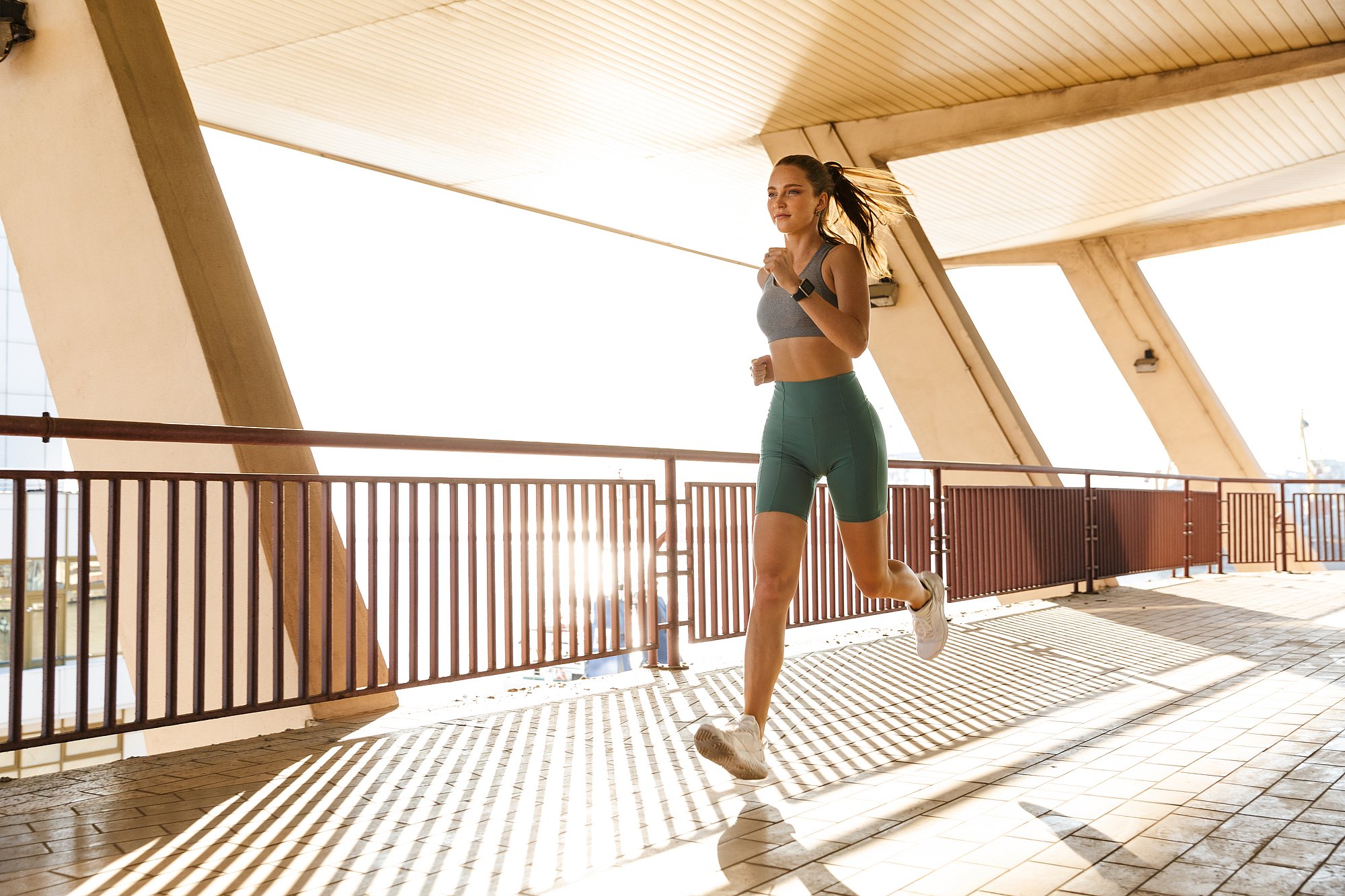The composition of a pre-workout meal is determined by our individual preferences and calorie requirement. It is obvious, however, that it should take into account the time and type of exercise.
What should I eat before workout and when?
The rule of thumb for physically active people is the time of having the last meal before the workout – at least 2 hours before you start your session.
So if you have 2-3 hours left before you go, you can eat a regular, complete meal. A great choice would be a typical lunch that will deliver:
- carbohydrates in the form of groats, rice, potatoes or pasta,
- proteins such as meat, fish, pulses, eggs, cottage cheese,
- fats, e.g. olive oil, rapeseed oil, seeds, nuts, avocado.
If, however, you are starting within an hour, you can grab a quick and light snack, such as a fruit smoothie, ripe banana or wheat bun with jam.
Not on a full stomach
Working out when your stomach is full not only is ineffective, but can also get you in some serious trouble. You will experience nausea, indigestion, and a feeling of fullness will accompany your entire session. You may even get a stitch, causing pain that will hinder you from moving freely.
A too short time interval between a meal and physical activity can also adversely affect muscle activity due to insufficient oxygen supply. In that case, blood accumulates around your stomach and intestines to take up the valuable nutrients from food, diminishing the blood supply to skeletal muscle tissues.
What should I eat after the workout?
The purpose of a post-workout meal is to replenish glycogen in your muscles and liver and to accelerate the recovery of muscle fibres. For working people who maintain intervals of more than 24 hours between workouts, the glycogen will be topped up during the day, so the meal does not need to be consumed immediately after the activity. However, you should remember that muscle glycogen recovery is the fastest during the first two hours after a completed workout.
A recommended meal should include complex carbohydrates with a low glycaemic index, such as wholemeal bread, coarse groats, barley or oat flakes and proteins. For instance, you can choose wholemeal bread sandwiches with lean poultry meat, fish or egg, fruit and cottage cheese or salads with coarse groats and lean meat.

Competition or leisure?
We all know that practice makes perfect. However, many of us are unaware that pre- and post-workout nutrition is critical to the success of an athlete. That’s why anyone who wants to take up sports as an amateur (which is becoming increasingly popular) should carefully plan their meal schedules. For amateur athletes, the meal before and after a workout session will be essential for recovery and performance. Especially if the time between the activities is less than 24 hours.
People engaged in leisure sports do not have to pay that much attention to when they eat before and after workouts. It is important that the food cannot be too heavy on your stomach when you move. Bulking up is yet another thing. In that case, you will need to distribute protein between your meals throughout the day and the post-workout meal consumed within an hour after the session.
It should be stressed that women suffering from hormonal disorders who work out should also take care to have a post-workout meal or deliver carbohydrates (such as an isotonic drink) during the activity. This is important due to the sensitivity of the female pituitary gland (which controls hormones) to energy shortages.
Food under scrutiny
We already know that pre- and post-workout meals are especially important for professional athletes. Leisure time physical activity does not require you to keep an eye on the labels or consumption times before and after workouts. However, if despite the regular activity your fitness level or body shape are not improving, you should pay more attention to your meals.
Literature:
- Bean A.; Energia, a wydolność; Przed, podczas i po treningu; Żywienie w Sporcie; Zyski i S-ka Wydawnictwo; Wyd. I; 2008; 17-31; 51-55
- Szwajcarska Piramida Żywienia Sportowców [access on 21/04/2022] https://adst.mp.pl/s/www/pacjenci/piramiada_zywienia_sportowcow.pdf
- Position of the Academy of Nutrition and Dietetics, Dietitians of Canada, and the American College of Sports Medicine: Nutrition and Athletic Performance; Journal Of The Academy Of Nutrition And Dietetics, 2016; 116, 501-528
